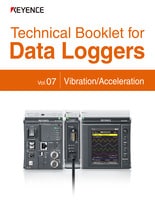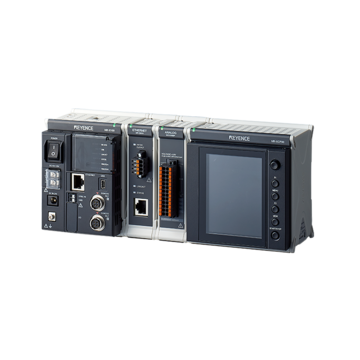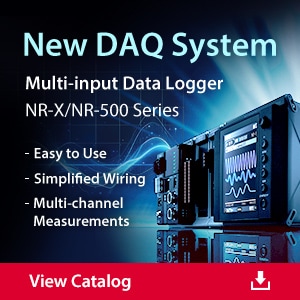Data Acquisition (DAQ)
Enhancing HVAC and Noise Control with Acoustic Data Logging
-
Tags:
- Sound Intensity , Sound Level
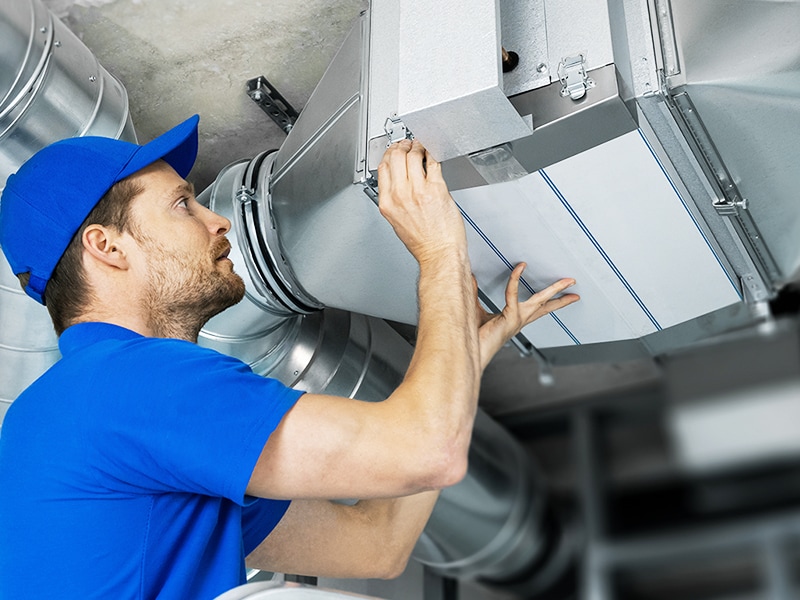
Acoustic data logging refers to the continuous monitoring, recording, and analysis of sound waves and noise levels. These measurements are taken with specialized digital data loggers. Over time, these systems track sound and capture valuable information on irregularities and threshold breaches in a variety of environments.
What is Acoustic Data Logging?
In HVAC systems, acoustic data logging is a key tool for HVAC duct sound dampening by identifying noise sources. Several types of acoustic data loggers are available. Portable noise data loggers are compact and mobile, which is ideal for temporary sound monitoring at locations such as construction sites.
Stationary digital data loggers, on the other hand, are fixed devices designed for long-term use. They are particularly helpful in settings like HVAC systems and at industrial plants where consistent monitoring is a necessity. Wireless acoustic loggers are used in remote or real-time monitoring; they transmit data wirelessly, allowing teams to analyze conditions without frequent manual intervention.
There are several ways to collect acoustic data. Sound pressure levels are measured in decibels (dB) using integrated microphones to assess the intensity of sound within a monitored space. These loggers can record frequency-specific measurements that can distinguish between low-, mid-, and high-frequency noise sources. Additionally, advanced systems can account for environmental variables like airflow rates or structural vibrations.
We’re here to provide you with more details.
Reach out today!

Role of Acoustic Monitoring in HVAC Systems
Acoustic monitoring targets specific noise sources, which helps engineers implement effective HVAC sound-dampening solutions. Among the most common noise sources are fan and motor vibrations, airflow and duct turbulence, or diffusers and dampers. Any of these sources can produce disruptive noise, and identifying the sources is effective for reducing HVAC noise.
Monitoring with digital data loggers enables the early detection of abnormal noise patterns; this helps prevent issues before they escalate into significant issues. These devices can do everything from detecting subtle changes in the frequency and intensity of sounds to alerting maintenance teams to potential problems. With the ability to detect these problems early, acoustic monitoring helps ensure the longevity of a system by supporting HVAC sound insulation strategies.
Engineers can also use the data to determine if a system has degraded over time and help predict maintenance schedules. For example, if noise levels increase after several years of operation, it may indicate worn mechanical parts or an airflow blockage. This helps validate the effectiveness of noise reduction measures.
How Acoustic Data Logging Helps HVAC Sound Dampening
By pinpointing problem areas within the system, such as vibrating ducts, loose fasteners, or fan imbalances, technicians can address the root cause of excessive noise. Sound data collection through devices like KEYENCE’s data loggers NR-X ensures that targeted solutions prevent unnecessary disruptions and repairs. Logs provide frequency-specific information. This makes it easier to match noise reduction techniques with specific issues.
One of the most significant contributions of acoustic data logging is the guiding material selection. By analyzing frequencies and decibel levels, technicians can determine whether or not to implement duct linings or noise barriers to reduce HVAC noise. This data also plays a vital role in post-installation performance because technicians can confirm that HVAC duct sound-dampening measures are working effectively by comparing real-time readings to baseline noise levels.
Get detailed information on our products by downloading our catalog.
View Catalog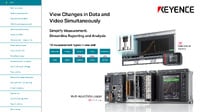

Key Benefits for Air Duct Noise Reduction
Lowering noise levels through HVAC duct sound dampening delivers numerous advantages. One of the most immediate outcomes is occupant comfort; quieter living and working environments reduce background disturbances and create spaces that are conducive to relaxation and overall improved well-being. This is particularly true in shared office spaces where portable data acquisition and continuous sound intensity measurement can identify and address persistent noise issues, making it easier to boost productivity and employee focus.
Buildings with noise reduction technologies are also more energy efficient. Uncontrolled vibrations and excessive noise often contribute to mechanical wear, leading to increased energy consumption. By integrating data loggers NR-500 into HVAC noise reduction protocols, engineers can reduce these inefficiencies.
Compliance with noise regulations is another key benefit. Acoustic monitoring ensures that HVAC sound insulation measures align with local and international standards, which helps avoid fines and operational setbacks. Continuous monitoring of HVAC systems can be fine-tuned in real time.
Applications of Acoustic Data in Environmental Noise Control
In most everyday settings, sound data plays a role in managing noise generated by heavy machinery and ventilation systems. This monitoring ensures adherence to workplace safety standards designed to protect employee hearing and overall health. High-intensity noise can be corrected through the installation of HVAC sound insulation or vibration mounts.
In residential and commercial settings, monitoring tools help track and mitigate noise that originates from HVAC sound-dampening issues or noisy vents. This helps reduce disturbances in shared spaces and offers occupants peace of mind.
Hospitals and healthcare facilities also benefit from sound intensity measurements to keep sensitive areas like patient rooms and operating theaters quiet and calm. Excessive noise is detrimental to a busy hospital. Sound technicians play an important role in keeping things as quiet as possible and are vital to promoting patient recovery and helping doctors focus. By analyzing acoustic data, they can create noise reduction solutions by installing insulated duct linings or soundproofing curtains.
Schools and universities also benefit from noise control.HVAC noise in classrooms and libraries can lead to significant distraction and the inability to concentrate. By ensuring quieter indoor spaces, schools can maintain optimal learning environments.
Acoustic monitoring also extends to transportation hubs; this, to name a few, includes tunnels, airports, and train terminals. Technicians can address excess noise from both internal ventilation systems and external traffic. Inside these buildings, duct silencers and soundproof barriers have been installed to prevent noise from disrupting operations and improve passenger experiences. Externally, acoustic enclosures and vibration-dampening mounts can help dampen noise from rooftop HVAC units.
Discover more about this product.
Click here to book your demo.

Reducing Noise Pollution with Acoustic Technology
Advanced noise isolation methods combine passive and active technologies to deliver comprehensive HVAC noise reduction. Passive dampening relies on acoustic barriers and soundproof panels to absorb and block noise, while active noise cancellation manipulates sound waves in real time. This effectively cancels unwanted noise. By using these methods, HVAC systems achieve superior HVAC sound-dampening results.
Modern acoustic data loggers enhance smart HVAC systems through real-time monitoring and automatic adjustments. These systems can predict noise spikes—based on airflow rates and component wear—and also allow for preventative measures to be taken before noise exceeds set thresholds. This integration reduces long-term noise issues while promoting optimal system efficiency.
Sustainable soundproofing materials will support effective HVAC sound insulation in the future. Eco-friendly duct linings and vibration-dampening panels minimize both noise and environmental impact. Noise mapping and analysis transform logged sound data into actionable insights. These maps guide proactive soundproofing strategies for specific zones and help reveal high-risk areas prone to future noise problems.
Take Control of HVAC Noise with Acoustic Data Logging
Looking to reshape your HVAC noise reduction strategies? Since 2011, KEYENCE has been listed on Forbes as “Most Innovative Companies,” and our goal is to bring that innovation to you. Our digital data loggers provide sound intensity measurements to optimize your HVAC sound insulation.
Discover how we can transform your noise control strategy! Enhance your acoustic data analysis with precise data logging, and contact KEYENCE today!
Contact us to learn more about how our advanced technology can help take your business to the next level.
Contact Us

